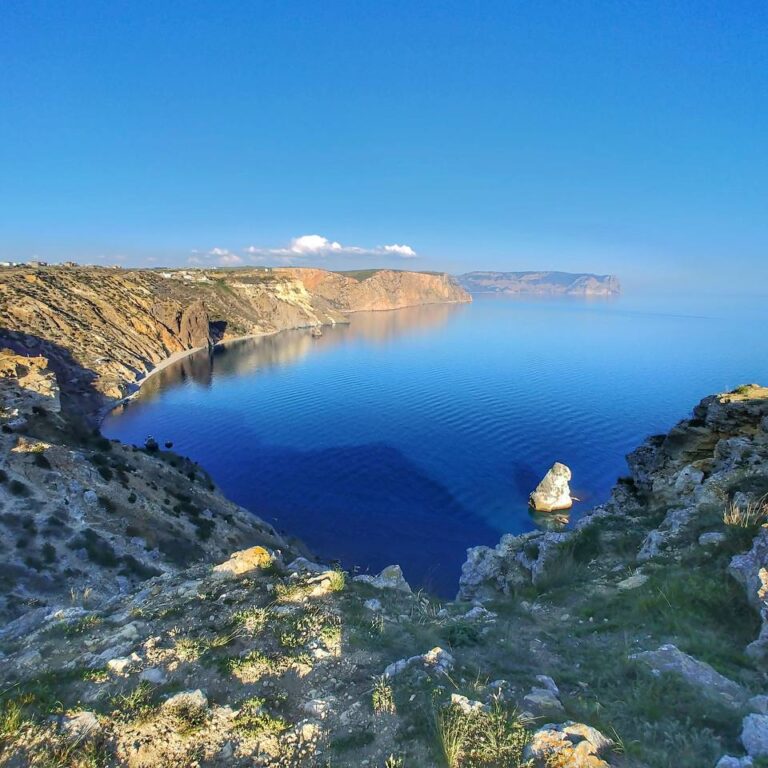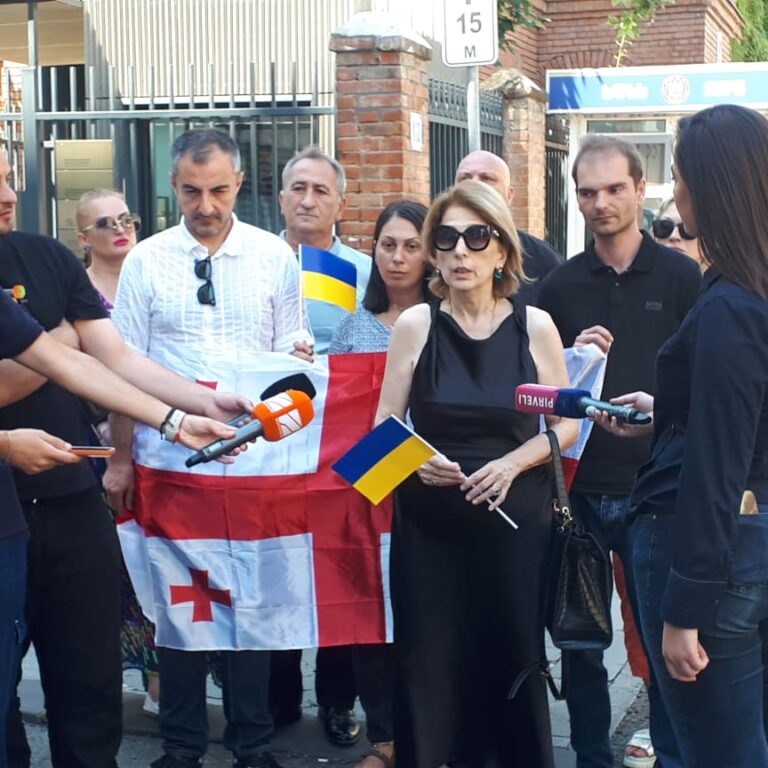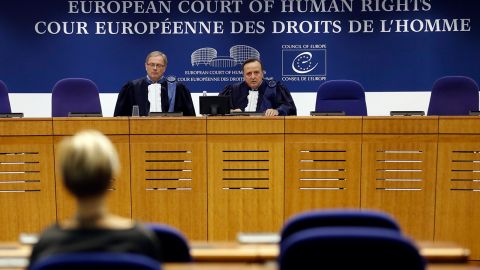On the night of June 6, by blowing up the dam of the Kakhovskaya HPP, the aggressor state chalked up the crime of ecocide. The world community recognized this act of the Russians as an unprecedented violation of international law and an act of terrorism that posed a threat to the environmental security of Ukraine and the lives of its citizens. We are already seeing the consequences of such a barbaric act in the Kherson region.
Dozens of flooded settlements, hundreds of thousands of affected Ukrainians, shortage of drinking water and destroyed infrastructure – this is the price of the Kremlin’s criminal efforts to make Ukraine its own colony. In addition, the risks at the Zaporizhzhya NPP have increased, which threatens the country’s nuclear safety and the lives of millions of people around the world.
The occupied Crimea also experienced a negative impact from the explosion of the dam of the Kakhovka HPP. The chronology of events and individual facts were studied by the experts of the Association of Reintegration of Crimea.
Almost immediately after the dam was blown up by the occupiers, the criminal “head of Crimea” Sergey Aksyonov stated that the peninsula allegedly was not in danger. However, he acknowledged that the North Crimean Canal was becoming shallow, and very soon there would be no fresh water left in it [1].
It should be noted that the illegal launch of the canal last year and the current shallowing together can have catastrophic consequences for the construction in the future, since the concrete blocks of the canal will methodically crack, which will further lead to its destruction. Experts also record a high level of deterioration of utility networks in the temporarily occupied Crimea, which the occupiers have not repaired since the capture of the peninsula [2].
The occupiers’ negligence in the field of water supply significantly increases the risk of deterioration of the epidemiological situation in the Crimea due to the spread of infectious diseases. British and American experts have already warned about such consequences [3].
The situation is carefully studied by the Mejlis of the Crimean Tatar people, whose representatives also come to disappointing conclusions, including the prospects for the spread of infectious diseases [4]. Concerning this problem, specific cases of infection of Crimean residents with serious infectious diseases have already been recorded, but Crimean collaborators note that allegedly the “reason” for this is the violation by Crimean inhabitants of “restrictions on swimming” [5].
The quality of water in wells that Crimean collaborators have illegally made earlier can also change and become unsuitable for consumption [6]. Refat Chubarov believes that Crimean agriculture may be under threat of destruction [7]. The situation is aggravated by the complete failure of the collaborators to solve the problem with water supply [8].
Crimeans report that local collaborators are trying to “prevent panic” among the population of the peninsula, in particular, they are afraid of a possible wave of anti-Russian protests against the army of the aggressor state, which committed such a terrible crime [9]. Also, the aggressor throws “information” about the alleged “increase in the level of radiation in the Dnipro water” into the information field, which is also an element of propaganda, in order to “minimize” the negative consequences of the aggressor’s terrorist attack [10]. Along with this, the geography of water supply restrictions is growing rapidly [11].
In general, the occupiers’ “water policy” quite clearly demonstrates the attitude towards the Crimean residents, whose rights and interests are simply not taken into account. It was tested during the years of occupation, and now it has also become part of the criminal acts of Aksyonov and the company.
Experts of “Ukrgidnoenergo” predict the greatest destructive impact from the destruction of the dam of the Kakhovka HPP for the agricultural sector. They highlight the significant problems that may arise for years to come [12]. It should be added that by the time the dam was blown up, the waters of the North Crimean Canal were used by the occupiers as irrationally as possible, and significant rainfall over the past few months played into the hands of the Crimean “agrarians” [13].
In the light of these events, the Crimean collaborators have already started talking about “the loss of the rice harvest on a total area of 3.2 thousand hectares.” Sergei Aksyonov even “promised to compensate” farmers for crop losses with “payments from the budget”. But he, as expected, did not name the amount of such compensations and the timing of their payment, which can only mean one thing: no one will actually “reimburse” anything, the occupiers simply seek to “avoid problems” for a while. The statements of the main collaborator that “the water in the reservoirs will be completely enough for the farmers for the current year” also look very doubtful.
The head of the Crimean Tatar Resource Center, Eskender Bariev, notes in this regard that there will not be enough water not only for irrigating rice fields, but also for other crops. He also points to another potential problem: namely chemical production. Mention should be made of the accident at the Crimean Titan that occurred in 2018 due to the lack of fresh water used by the occupiers in “separate production cycles”. Then all methods of water desalination for the occupiers turned out to be ineffective due to their negligence [14].
That is, the undermining of the dam of the Kakhovka HPP by the Russian invaders created risks not only for agriculture and tourism in the Crimea, but also for the environment.
It is necessary to mention the significant harm to the Black Sea, which the occupiers have been polluting since 2014. Experts come to the conclusion that undermining the dam will negatively affect the Black Sea. A strong water hammer, combined with the ingress of toxic substances of organic and inorganic origin into the sea, poses a significant threat to the marine ecosystem.
In particular, a potential source of pollution is pesticides that enter the sea from the flooded fields of the Kherson region. Harmful substances from the Kakhovka Reservoir, which are now on the surface, also pose a danger. There are a lot of heavy metals from industrial enterprises in the bottom sediments, they will be carried by the sea very quickly by the wind. This situation poses a significant threat to nature and man [15].
Also, an increase in the content of fresh water in the Black Sea will lead to increased blooms, in particular, in the waters of the Crimean coast. Decrease in salinity will affect zooplankton, fish and dolphins, who risk being left without the proper level of oxygen in sea water, which will be absorbed by the extinct phytoplankton. According to ecologists, this is an additional large-scale man-made disaster [16].
Crimean residents have already begun to react to the dam rupture and the above threats by activating anti-Russian sentiment. According to local residents, a significant number of Crimean inhabitants are planning to urgently leave for Europe and stay in the EU countries. Part of the local population has plans to move to mainland Ukraine through European states [17].
In general, the situation on the occupied peninsula is rather unsettled, which is also felt by the Crimean collaborators, who in response step up repressive measures, especially against the Crimean Tatars [18]. The experience of the occupation shows that traitors almost always act according to the same scenario. Fear demoralizes them and forces them to use violence to quell public protests.
Trying to “calm down” the Crimean residents, the aggressor’s Deputy Prime Minister Marat Khusnullin said that the destruction of the Kakhovka HPP would not affect the water supply of the Crimea and announced his intention to “ensure the filling of the North Crimean Canal with the help of pumps” [19], but it is obvious that the aggressor has neither the logistical capacity, nor the technology and equipment, nor the “extra” sources of electricity for such projects. Such statements should be identified as attempts to play for time and make Crimean inhabitants forget about existing problems for a certain period.
The aggressor controlled “Crimean media” are also working for this purpose, which, since the explosion of the dam of the Kakhovka HPP, have been trying only to “search for the guilty”, and in no way provide information that would really be useful to the Crimean inhabitants. How bullying looks like their statements about the “development of tourism and agriculture in the next few years”.
And this despite the fact that the collaborators clearly understand that there may not be enough water even for a year. The narrative is also spreading about the alleged “readiness” of the Crimean inhabitants for problems with water supply and that allegedly over the years of the “water blockade” they “learned not to depend on the North Crimean Canal.”
A separate direction of propaganda is the false accusations of Ukraine in undermining the dam of the Kakhovka HPP. And this is happening against the background of the fact that Ukrainian intelligence already has a document from the so-called “ministry of health of Crimea”, which refers to a sharp deterioration in drinking water quality indicators. The occupiers also hide information about cases of infection of Crimean residents with microorganisms of pathogenicity groups I and II and the implementation of appropriate sanitary and epidemiological measures by local services [20].
Today, the Ukrainian authorities must take into account that the Crimean collaborators can launch large-scale terrorist attacks that will completely destroy the Crimean ecosystem. Due to the destruction of the Crimean reservoirs, the Russian invaders can provoke local man-made disasters, as well as cause it in various chemical industries [20]. That is, it should be assumed that the undermining of the dam of the Kakhovka HPP is part of the action plan of the occupiers in the process of the aggressor’s calculated loss of control over the occupied peninsula. Obviously, in the future they plan to again blame Ukraine for everything, which has been fighting the Kremlin’s insidious armed aggression for more than a year.
Thus, the explosion of the dam of the Kakhovka HPP created a threat to the sanitary and epidemiological security of the peninsula for the occupied Crimea and challenges for the ecosystems of the Black Sea. The occupiers use the practice of concealing the consequences of the tragedy from society, thereby endangering the life and health of Crimean residents.
The main efforts of the Crimean collaborators are focused on fake accusations of Ukraine of allegedly “committing ecocide”, which fully correlates with the corresponding criminal narratives of the Kremlin. However, in fact, these events significantly intensified anti-Russian sentiments on the occupied peninsula.
Sources:
- https://tsn.ua/ato/u-krimu-vzhe-pochalisya-problemi-z-vodoyu-pislya-pidrivu-kahovskoyi-ges-2344339.html
- https://www.ukrinform.ua/rubric-crimea/3721689-pidriv-rosianami-kahovskoi-ges-naslidki-dla-timcasovo-okupovanogo-krimu.html
- https://www.pravda.com.ua/news/2023/06/6/7405576/
- https://www.unian.ua/society/kahovska-ges-u-medzhlisi-zayavili-pro-problemi-dlya-krimu-12284127.html
- https://glavcom.ua/country/health/pidriv-kakhovskoji-hes-stalo-vidomo-pro-tjazhkij-vipadok-infikuvannja-u-krimu-935099.html
- https://24tv.ua/situatsiya-krimu-pislya-znishhennya-kahovskoyi-ges-vodu-podayut_n2332890
- https://www.radiosvoboda.org/a/news-chubarov-voda-krym/32462860. html
- https://fakty.com.ua/ua/ukraine/20230611-okupanty-v-krymu-ne-znayut-yak-vyrishyty-problemy-z-vodopostachannyam-czns/
- https://bykvu.com/ua/bukvy/pislia-pidryvu-kakhovskoi-hes-rosiiany-ne-mozhut-vyrishyty-problemy-z-vodopostachanniam-u-krymu-tsns/
- https://news.obozrevatel.com/ukr/society/yak-rosiya-namagatimetsya-povernuti-vodu-do-okupovanogo-krimu-poyasnyue-britanska-rozvidka.htm
- https://informator.ua/uk/kerch-bez-vodi-yevpatoriya-na-cherzi-shcho-vidbuvayetsya-u-krimu-pislya-pidrivu-kahovskoji-ges
- https://24tv.ua/ru/posledstvija-podryva-gjes-krym-na-gody-ostanetsja-bez-vody-prognoz-ukrgidrojenergo-24-kanal_n2335119
- https://ru.krymr.com/a/krym-voda-kakhovskaya-ges-podryv/32447387. html
- https://www.ukrinform.ua/rubric-crimea/3720204-bez-vodi-z-dnipra-u-krimu-budut-problemi-z-silskim-gospodarstvom-i-promislovistu-medzlisu.html
- https://www.svoboda.org/a/kanal-perestanet-suschestvovatj-razrushenie-ges-vliyaet-na-krym/32454369.html
- https://suspilne.media/498406-ce-tehnogenna-katastrofa-ekolog-poasniv-vpliv-naslidki-pidrivu-kahovskoi-ges-dla-cornogo-mora/
- https://donpatriot.news/article/stalo-vidomo-scho-govoryat-zhiteli-krimu-pro-putina-pislya-pidrivu-kahovskoyi-ges
- https://sobytiya.com.ua/sho-byde-z-krimom-cherez-pidriv-ges-y-rnbo-ozvychili-symnii-prognoz/
- https://ua.krymr.com/a/podachu-dniprovskoi-vody-v-krym-prypyneno-maibutnie-pivostrova/32459159.html
- https://greenpost.ua/news/u-krymu-zayavlyayut-pro-vidsutnist-nebezp eky-zarazhennya-ale-kupuyut-vaktsyny-proty-skazu-i54499







